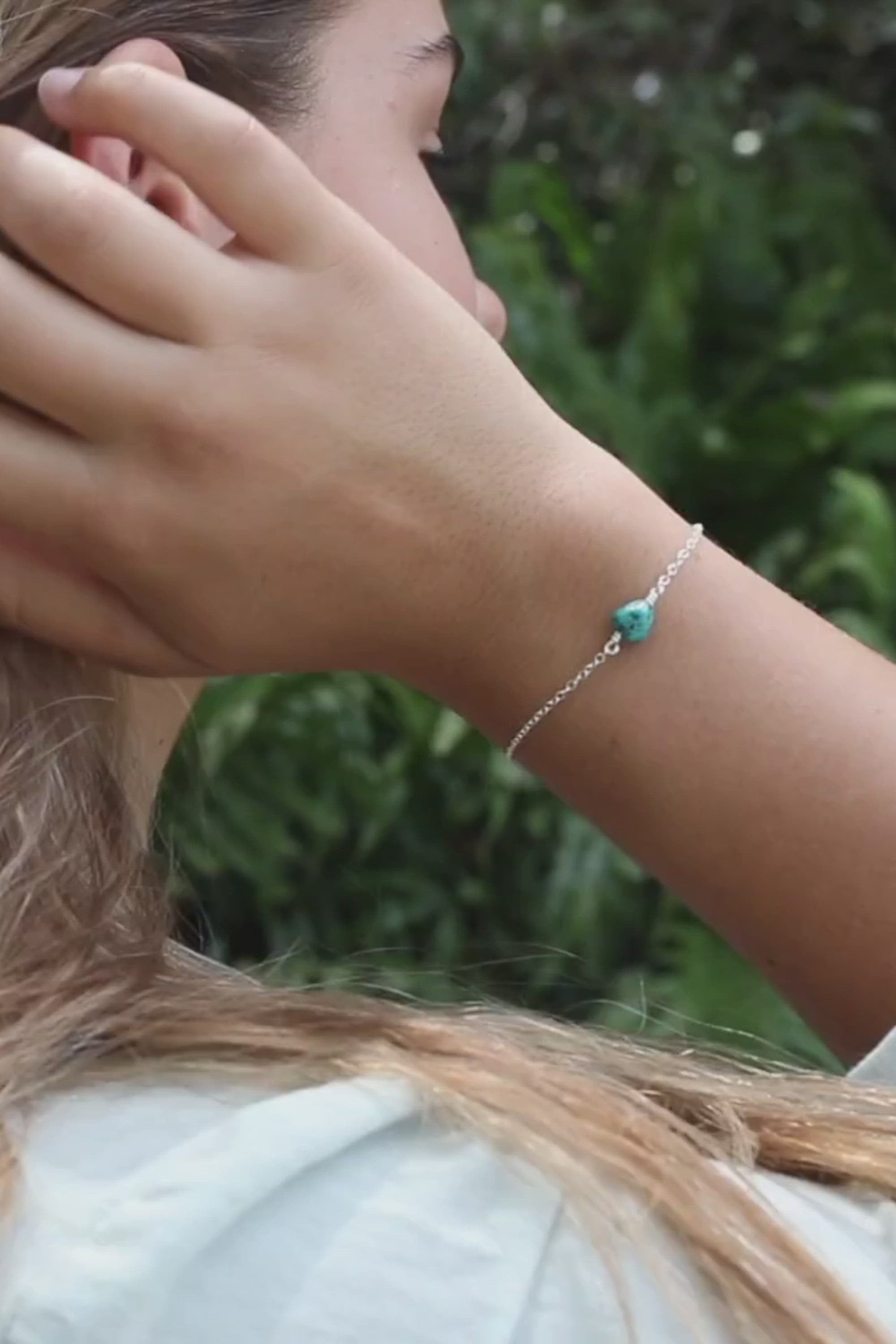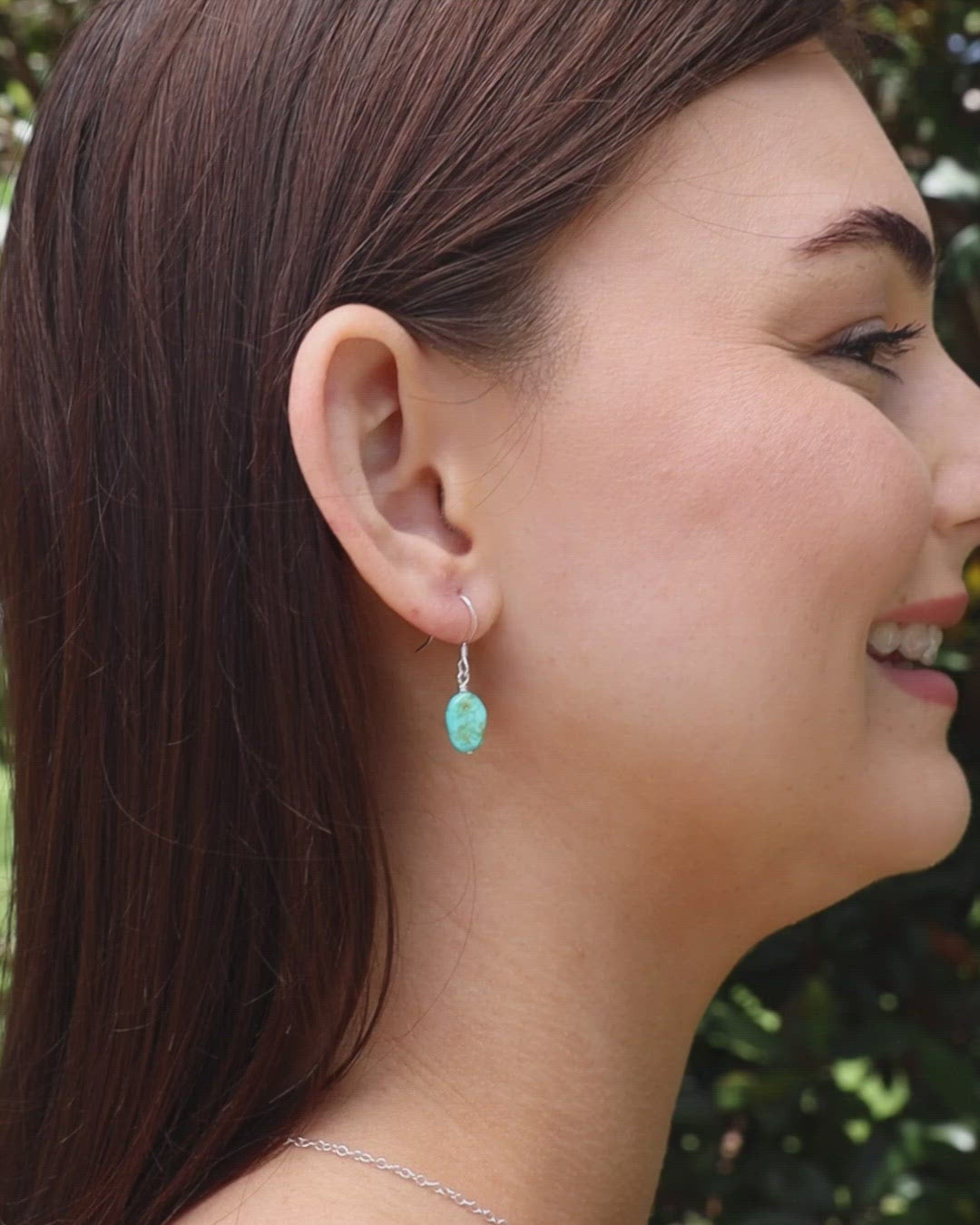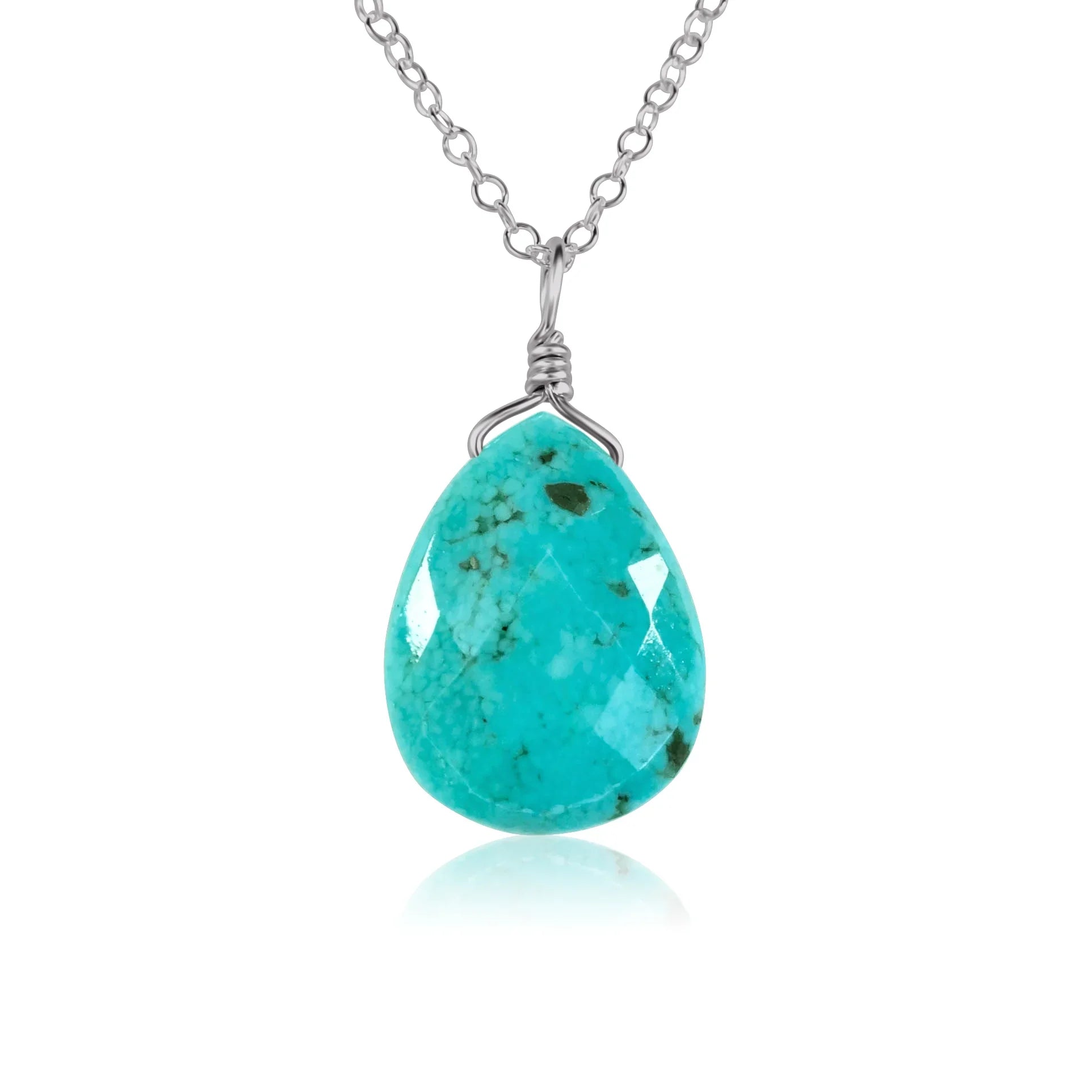Enchanting, tropical sea-coloured turquoise is a December birthstone.
Thought to be one of the oldest stones adored throughout history, turquoise takes its name from pierre turquoise, which is French for Turkish stone. This is because the magical crystal was brought from Asia via Turkey, with turquoise found in the bedazzling bazaars.
Tiny turquoise teardrop necklaces
Turquoise meanings
Believed to bring good luck, this gorgeous bluey-green crystal, is a stone of protection and wealth and has been used for centuries by warriors and kings to keep them safe in battle, as well as showing their prosperity.
A crystal associated with tranquillity, soothing turquoise brings calmness, clear vision and security to its wearers.
It's also a stone connected to love and friendship, so is a favourite gemstone to bestow as a gift.
Turquoise silk wrap choker
Turquoise uses
Offering protection, turquoise has been worn by soldiers and royalty throughout history, to protect them not only in combat, but against all things evil.
While it's still used for mental and physical protection today, turquoise is well-known for bringing luck and unleashing ambition and creativity.
For these reasons, it is a perfect stone to be worn or used in the workplace, as it enhances leadership and helps with making good decisions. Turquoise is thought to be an especially beneficial stone to wear for those whose jobs include communication (including writers), along with those in mentally stimulating vocations, such as accounting and the media, as it helps ease anxiety and labourers for protection.
Turquoise is a wonderful crystal to wear when travelling, as it looks after the traveller and their possessions and protecting them again theft and accidents.
Turquoise beaded chain choker necklace
How and where turquoise is formed
Turquoise is formed in dry climates such as south western regions of the USA (including Arizona and Nevada), China, Chile, Egypt, Iran, and Mexico. This is because, in these areas, the little amounts of rainfall experienced seeps down through soil and rock, dissolving copper in the process.
When this water is evaporated by the dry and humid temperatures, the copper mixes with aluminium and phosphorus to leave small amounts of turquoise on subsurface fractures.
In some cases, turquoise can replace the rock in these waters and create a solid chunk of turquoise.




























































0 comments